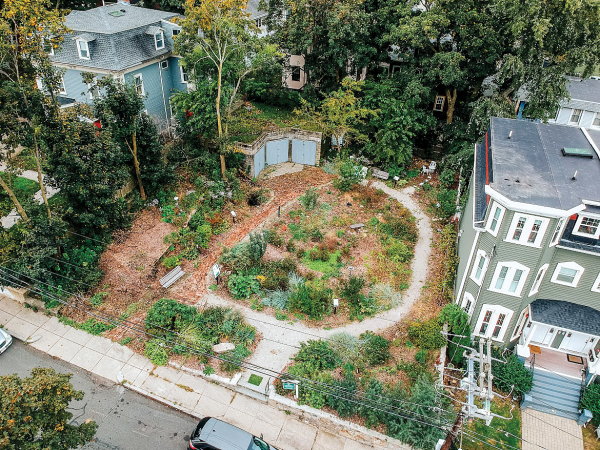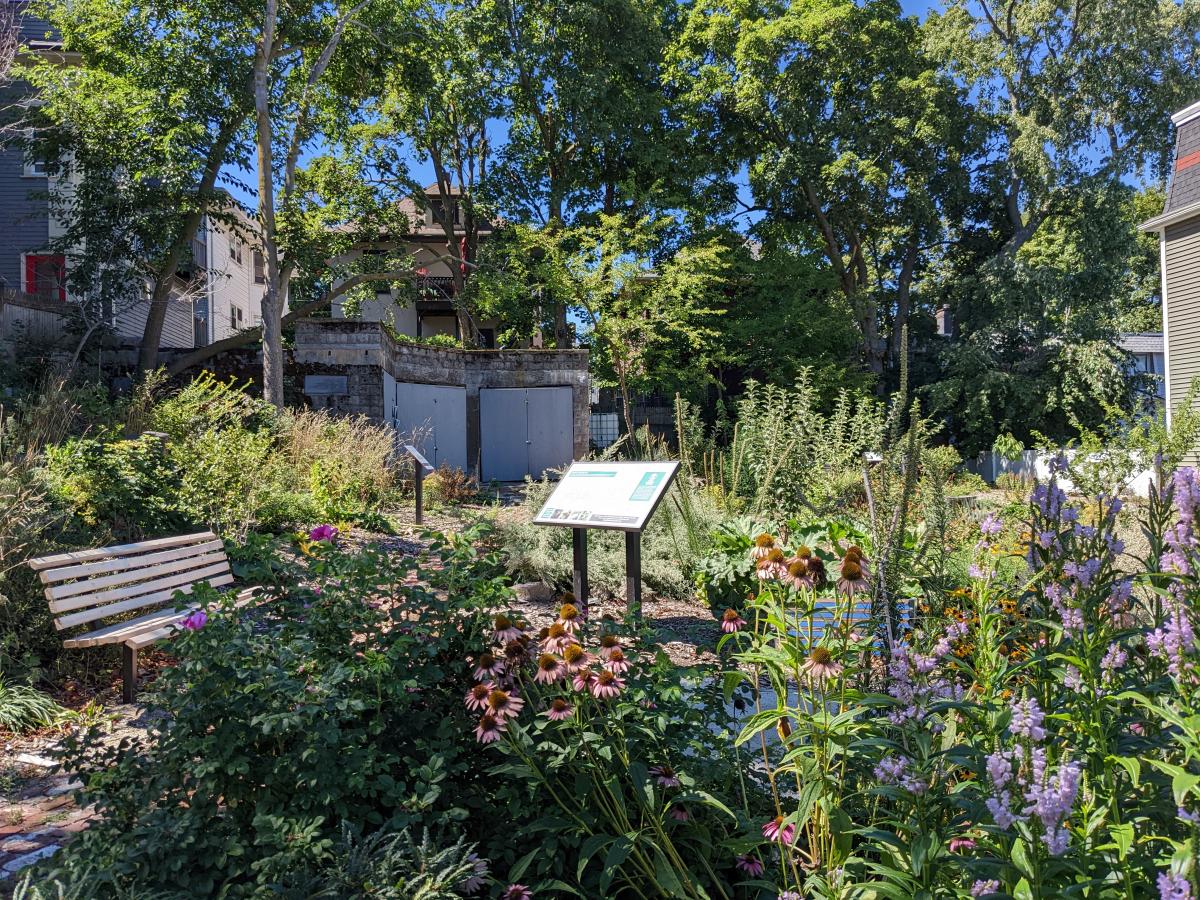April 24, 2024

This photo shows the food forest on Everett Avenue on Jones Hill under construction. It is one of Boston’s several food forests, which are a kind of urban garden that provides a host of environmental and social benefits across the city and its neighborhoods.
Boston Food Forest Coalition photo
A quiet transformation is happening on some of Boston’s many vacant lots with the help of hardworking neighbors and the Boston Food Forest Coalition, a nonprofit community land trust that is working to turn empty patches of land into vibrant gardens, primarily in Dorchester, Mattapan, and Roxbury.
One of the city’s newest food forests can be found on Everett Avenue on the side of Jones Hill near Uphams Corner.
Hope Kelley, a member of the coalition, said that food forests are meant to mimic the functions of a natural ecosystem, just on a smaller scale. “They are inspired by this style of land management called permaculture, which focuses on viewing the whole ecosystem rather than its individual parts,” she said. “It also focuses on – especially at our sites – growing perennials and specifically edible perennials, as opposed to just annual crops that you would find in public parks or urban farms.”
Kit Binns, a Dorchester resident and one of the stewards who has been working on the Uphams Corner Food Forest since the beginning in 2016, explained that the Everett Avenue project came to be with a lot of grassroots organizing.

“Somebody invited Orion [Kriegman, founder and executive director of BFFC] to the Jones Hill Association to talk about food forests, and the problem was, the lot was owned by the city,” Binns said. “The problem with these kinds of vacant lots is, will they be used for income-restricted housing, or open space? Both of these are laudable causes. But in this case, we don’t have much open space in the Uphams Corner area.”
Binns explained how a pro bono architecture company, COG Design, helped to draw up the blueprints for the site, and a nonprofit called Restoring Roots helped to actually landscape the area. And during that time, BFFC became a land trust, meaning the city could officially transfer the land directly to the non-profit.
“So, by 2021, we actually had the first summer of plantings,” he said.
Kelley said the contents of each food forest – of which there are ten in the Boston area, with an 11th on the way – are determined by what each community wants. For example, she said, the Savin Hill Wildlife Garden contains plants that mostly serve insects, birds, and pollinators. The Everett Avenue lot, on the other hand, grows lots of fruits, such as pears, strawberries, blueberries, honeyberries, and Concord grapes, but also herbs such as thyme and chives.
“Another thing about food forests is that they’re built with longevity in mind,” Kelley said. “So, some of the species we plant on these sites, Uphams or otherwise, might not produce for a few years, or five years, or longer.”
Kelley explained that food forests serve three distinct purposes all at once.
“Environmentally, these spaces provide green space that has climate impacts, specifically in parts of Boston that have been underinvested in,” Kelley said. “You know, Boston has a history of racist mortgage lending practices, which has made it so that certain neighborhoods, specifically Dorchester and Mattapan and Roxbury, have not had the same investment in public green space, which means that those neighborhoods are measurably warmer in the summer. So, we’re trying to build 30 food forests by 2030 with the idea being that, although these parks are small, as we build more and more of them, collectively, they’ll form this kind of green corridor, and this will have the effect of a broader ecosystem with beneficial climate impacts.”
The other purposes, Kelley said, include the very basic one of access to food, and equally as crucial, creating a sense of social connection among residents.
“Neighbors who collaborate on these parks are folks who often have lived in the area for decades and didn’t know their neighbors. And now they do,” Kelley said. “And now they have this kind of third space that they’re able to come together in.”
Binns said working as a steward requires some effort, but that the payoff is wonderful: knowing that this space belongs to you and your community truly does bring people together.
“It requires some effort, attention, and concern,” Binns said, “but if people think in general the idea of parks or open spaces in particular are good places to support, and they really enjoy that, or beyond that, if they want to learn about how plants feed off each other and help each other, then there’s really an opportunity to understand that better.”
Kelley said there are a number of ways to get involved with the Food Forest mission. Residents can sign up to volunteer at any food forest in the city, request a food forest in your neighborhood, or sign up for the newsletter at bostonfoodforest.org. You can also follow BFFC on Facebook or Instagram at @bostonfoodforest.
“I don’t think people are all necessarily on their own when they do this,” Binns said. “Some effort is required, but on the other hand, there is a lot of support, and they’re a kind of unusual type of space that I think people are beginning to learn about.”
Villages:
Topics:


